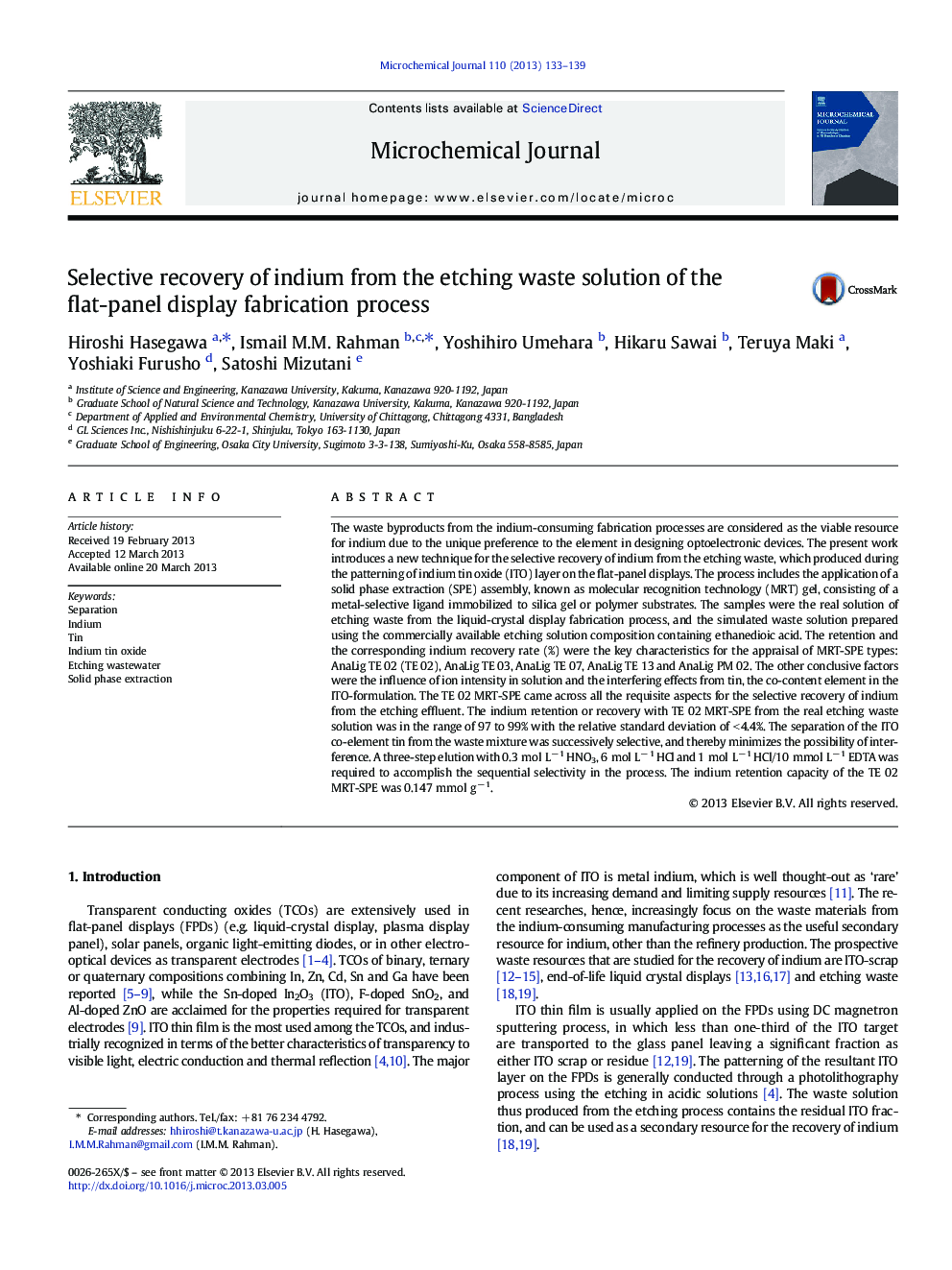| کد مقاله | کد نشریه | سال انتشار | مقاله انگلیسی | نسخه تمام متن |
|---|---|---|---|---|
| 7643522 | 1494884 | 2013 | 7 صفحه PDF | دانلود رایگان |
عنوان انگلیسی مقاله ISI
Selective recovery of indium from the etching waste solution of the flat-panel display fabrication process
ترجمه فارسی عنوان
بازیابی انتخابی از ایندیوم از راه حل زباله های اچینگ در فرآیند ساخت صفحه نمایش تخت
دانلود مقاله + سفارش ترجمه
دانلود مقاله ISI انگلیسی
رایگان برای ایرانیان
کلمات کلیدی
جداسازی، هندوستان، قلع، اکسید قلع ایندیوم، فاضلاب اچینگ، استخراج فاز جامد،
موضوعات مرتبط
مهندسی و علوم پایه
شیمی
شیمی آنالیزی یا شیمی تجزیه
چکیده انگلیسی
The waste byproducts from the indium-consuming fabrication processes are considered as the viable resource for indium due to the unique preference to the element in designing optoelectronic devices. The present work introduces a new technique for the selective recovery of indium from the etching waste, which produced during the patterning of indium tin oxide (ITO) layer on the flat-panel displays. The process includes the application of a solid phase extraction (SPE) assembly, known as molecular recognition technology (MRT) gel, consisting of a metal-selective ligand immobilized to silica gel or polymer substrates. The samples were the real solution of etching waste from the liquid-crystal display fabrication process, and the simulated waste solution prepared using the commercially available etching solution composition containing ethanedioic acid. The retention and the corresponding indium recovery rate (%) were the key characteristics for the appraisal of MRT-SPE types: AnaLig TE 02 (TE 02), AnaLig TE 03, AnaLig TE 07, AnaLig TE 13 and AnaLig PM 02. The other conclusive factors were the influence of ion intensity in solution and the interfering effects from tin, the co-content element in the ITO-formulation. The TE 02 MRT-SPE came across all the requisite aspects for the selective recovery of indium from the etching effluent. The indium retention or recovery with TE 02 MRT-SPE from the real etching waste solution was in the range of 97 to 99% with the relative standard deviation of < 4.4%. The separation of the ITO co-element tin from the waste mixture was successively selective, and thereby minimizes the possibility of interference. A three-step elution with 0.3 mol Lâ 1 HNO3, 6 mol Lâ 1 HCl and 1 mol Lâ 1 HCl/10 mmol Lâ 1 EDTA was required to accomplish the sequential selectivity in the process. The indium retention capacity of the TE 02 MRT-SPE was 0.147 mmol gâ 1.
ناشر
Database: Elsevier - ScienceDirect (ساینس دایرکت)
Journal: Microchemical Journal - Volume 110, September 2013, Pages 133-139
Journal: Microchemical Journal - Volume 110, September 2013, Pages 133-139
نویسندگان
Hiroshi Hasegawa, Ismail M.M. Rahman, Yoshihiro Umehara, Hikaru Sawai, Teruya Maki, Yoshiaki Furusho, Satoshi Mizutani,
